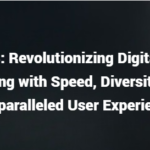Building and customizing mechanical keyboards is a hobby enjoyed by avid tech enthusiasts worldwide. As somewhat of a hobbyist yourself, you might be tempted to try your hand at DIY-ing the keyboard of your dreams. But is this undertaking really worth your time and money?
Custom keyboards are worth it for avid tech enthusiasts looking for the best sound and tactile typing experience tailored to their preferences. However, the hobby can also be expensive and time-consuming. Those looking for a cheaper option, could opt for a pre-built custom keyboard.
If you’re just starting out learning what’s involved in custom keyboards, there can be a lot to digest! In the following sections, I’ll provide you with a handy explanation of the different kinds of custom keyboards; I’ll then give you the run-down on all the pros and cons of building them. By the end of this article, you’ll have all the information you need to determine which approach is best suited to your needs.
Fully Custom Keyboards vs. Pre-Built Custom Keyboards
If you’ve googled a bit, you’ve probably come across all kinds of custom keyboards. In the term’s broadest sense, a custom keyboard allows you to change its design somehow.
They’re available in two general types:
- Fully or “true” custom keyboards. If going this route, you’ll need to purchase each necessary component. You can also get kits to help you out (but generally, the kits won’t come with every component involved, and you’ll need to purchase other parts separately).
- Pre-built custom keyboards. These come pre-assembled but allow you to choose which features you want (e.g., key colors, plates, etc.). You can also adjust them to your liking by removing the keys and adding new ones. However, you won’t be building them from scratch.
For the total beginner, pre-built customs are far simpler and more affordable. You can choose between different keys, plates, etc. They also come with programmable keys (super helpful for gaming).
Sometimes pre-built customs come with a few other helpful bits and pieces. For example, the XVX MK61 60% Mechanical Keyboard on Amazon comes with a key puller – so convenient to have on hand when you want to change up your keys! (It can be a tedious process). Because they’re pre-made, and you’re not ordering specific parts, these custom keyboards are certainly cheaper and quicker to attain.
However, if you’re aiming to achieve the most satisfying, bespoke, and “fully customized” typing experience, you’ll need to go for the old-school method.
The Components of a Fully Custom Keyboard
If you do want to create your own fully tailored mechanical keyboard from scratch, you’ll most importantly need some time and patience! There is a learning curve to building them. To get started, these are the essential elements you’ll need:
- Keyboard case
- Switch mounting backplate
- PCB (circuit board)
- Mechanical switches
- Keycaps
- Stabilizers
- USB cable
You’ll also need a few basic tools (a screwdriver, some tweezers). If you don’t have these, you should also get your hands on a soldering iron.
The parts listed above are the primary components of a mechanical keyboard. But where it can get complicated is the massive range of choices you have when it comes to these parts.
In some ways, the wide range of choices is both a pro and a con. It’s great because you can truly customize each bit of your entire keyboard to suit you just right. But it can be a tad intimidating if you’re just testing the waters!
For example, mechanical keyboard cases alone come in a variety of sizes:
- Full-sized
- 1800 compact
- Tenkeyless
- 75%
- 65%
- 60%
- 40%
Buying a Custom Keyboard Kit
Figuring out which parts to choose for your rig can be a bit challenging for a total beginner. To make the process easier, many companies sell custom kits.
These kits usually come with:
- Keyboard case
- Switch mounting backplate
- PCB (circuit board)
Purchasing a kit means you know that the PCB and plate fit properly inside the case.
If you’re looking for a custom kit to help you get started, consider the YMDK DIY Keyboard Kit on Amazon. Not only does it come with a case, plate, and PCB, but the kit also (conveniently) includes the stabilizers, a USB cable, and a keycap puller that you’ll require.
Pros of Custom Keyboards
Customized mechanical keyboards have a huge fan base for a reason. According to WIRED, some dedicated experts will gladly spend “hours building their customized rigs, while others drop thousands of dollars on a bespoke board.”
If you’re not entirely convinced that custom keyboards are worth it, read on to learn the reasons why some find the hobby so enthralling.
The Satisfaction That a Fully Customized Keyboard Provides
Generally speaking, most people love it when they have the option to customize their products to reach the pinnacle of perfection in their eyes. And when it comes to tech, enthusiasts can really take it to the next level.
It can be satisfying to build something from scratch with your own two hands. There may be a bit of a learning curve, but many people genuinely enjoy crafting their own products.
Not only do you get the joy of learning something new and building it yourself once it’s all done and working, but you also get the pleasure of having your rig just the way you like it—the best tactile typing experience, the best sounds, lighting, and overall feel.
You can also join a global community of other custom keyboard fans and share your creations, tips, and tricks with others. If you’re a tech-hound, it could quickly become a passion that you love taking part in and talking about.
Mechanical Switches and an Improved Typing Experience
Gamers spend a lot of time using their boards. And looking beyond the gaming community, there’s a big slice of the population that spends hours each day at their computer. It makes sense that you would want to invest in a board that gives you the most satisfaction in terms of tactility and typing.
In this sense, customizing your keyboard is not just for aesthetics. It can improve your whole experience. To better understand this, it’s helpful to compare mechanical keyboards with membrane keyboards.
Membrane keyboards have a softer, “mushier” feel. When you press a key, it touches a rubber layer that has circuits underneath it. The circuits then send the info to the computer.
Due to the rubber layer, membrane keyboards are often a lot quieter than mechanical ones. They’re also cheaper.
In comparison, mechanical keyboards operate utilizing spring-loaded switches that respond when a key is pressed. While the result is greater feedback for a user, they are also a lot louder than their membrane counterparts!
The switches of a mechanical keyboard are perhaps its most important feature. If you want to get into customizing keyboards, you should spend some time experimenting with different options to see which you prefer. What kinds can you get for your keyboard?
According to Switch & Click, there are three main groups of switches:
- Linear
- Tactile
- Clicky
To get a feel of the vast array of switches available, check out this page on Mechanical Keyboard. You’ll see that some fall into one category while others fall into two. So, what’s the difference between them?
Linear switches are best for those who prefer quieter, smoother keyboards. When they actuate, they don’t produce a tactile, bump sensation. They also tend to be smoother and more consistent. Due to their consistency, some gamers prefer them.
Tactile switches produce a more audible click and bump upon actuation. Some prefer this type as you get audible and tactile feedback. The sound and the bump let you know that the key’s been pressed.
Some produce more noticeable bumps than others, depending on the tactile switch you choose. But their sound is not as loud as clicky switches.
The last group, clicky switches, also feature tactile bumps and audible feedback. But these features are more prominent than in their tactile counterparts (hence the name “clicky”). The bumps are more substantial, and the clicks are louder.
You get the most noticeable feedback, but do keep in mind these switches can be noisy! If you’re doing a lot of typing, you work at night, or you type a lot in a quiet office, perhaps clicky switches are not the best option.
With this vast range of different switches, all with unique tactile and audible feedback qualities, you can see why frequent gamers and typists enjoy customizing their keyboards. It’s fun to experiment and create a board that suits you perfectly.
Other Benefits of Mechanical Keyboards
Some enthusiasts say that working with a customized keyboard makes them better and more accurate at typing and gaming. The satisfying combination of tactility and audible feedback improves their abilities.
Here are some additional benefits:
- Easy to repair and clean. Mechanical keyboards, with their replaceable parts, are easy to maintain.
- RGB lighting. While not exactly a crucial feature, the flashy lights are aesthetically pleasing.
- Durable and reliable. Compared to membrane keyboards, mechanical ones offer an enhanced response and feedback and are sturdier.
- Efficient. The switches allow for fast input and response times.
Cons of Custom Keyboards
Now that we’ve explored the pros, it’s time to look at the cons. If you’re reading this article, you may be wondering if the above benefits outweigh the associated downsides. Read on to discover the potential cons related to customizing your keyboards.
It Can Be Expensive To Customize Keyboards
If you clicked through to this WIRED article referenced earlier, you’d know that some die-hard keyboard customizers can spend a whole bunch of money on their hobby. The costliness of the pursuit is one obvious downside.
While it’s true that enthusiasts have been known to dish out hundreds or thousands on their keyboards, they do so for a good reason – it’s a hobby they love. The time, money, and effort are justified for them. You can only really know if it’s going to be worth it for you as well after trying it out.
If the above pros don’t convince you that much, you might be having a hard time justifying spending hundreds of dollars on all the bits and pieces you’ll need (which are a lot).
Mechanical boards are more expensive than their membrane counterparts, and getting yours customized just right can end up eating away at your wallet.
Customizing Keyboards Can Take a Lot of Time
Are you considering a pre-built custom keyboard or building one from scratch? If you choose the latter, you may have to wait a long time to receive your parts. The reason it takes so long is that you’re ordering individual elements rather than a pre-assembled, more generic product.
For example, it took the YouTuber Specter five long months to receive the custom board he ordered. In the video below, he walks you through how he built his first custom keyboard (for around $450):
After you’ve received all your custom bits, next, you’ll need to learn how to assemble everything. If you’re working with a new board, you’ll need to learn how to solder.
For an excellent step-by-step walkthrough on how to build your first keyboard, check out this guide by Tom’s Hardware.
Even if you do go for a pre-built custom, you’ll still be required quite a lot of patience when modifying it! For example, when you’re removing keys one at a time from a board, the process can be tedious and time-consuming. It’s a good idea to purchase a key puller to speed it up.
Due to all these reasons, customizing keyboards can undoubtedly become a hobby that takes a significant amount of your time.
Final Thoughts
In conclusion, whether custom keyboards are worth it for you or not will depend on personal preferences. If you’re spending a lot of time gaming or typing, it’s a great idea to invest in the board that is perfect for you.
Customized keyboards offer you the absolute satisfaction of fast, reliable inputs combined with audible and tactile feedback. This article has only brushed the surface of how in-depth you can go with your customizations! The downsides are it can be time-consuming and costly. If you’re still undecided, you could always start off with a pre-built custom board.







